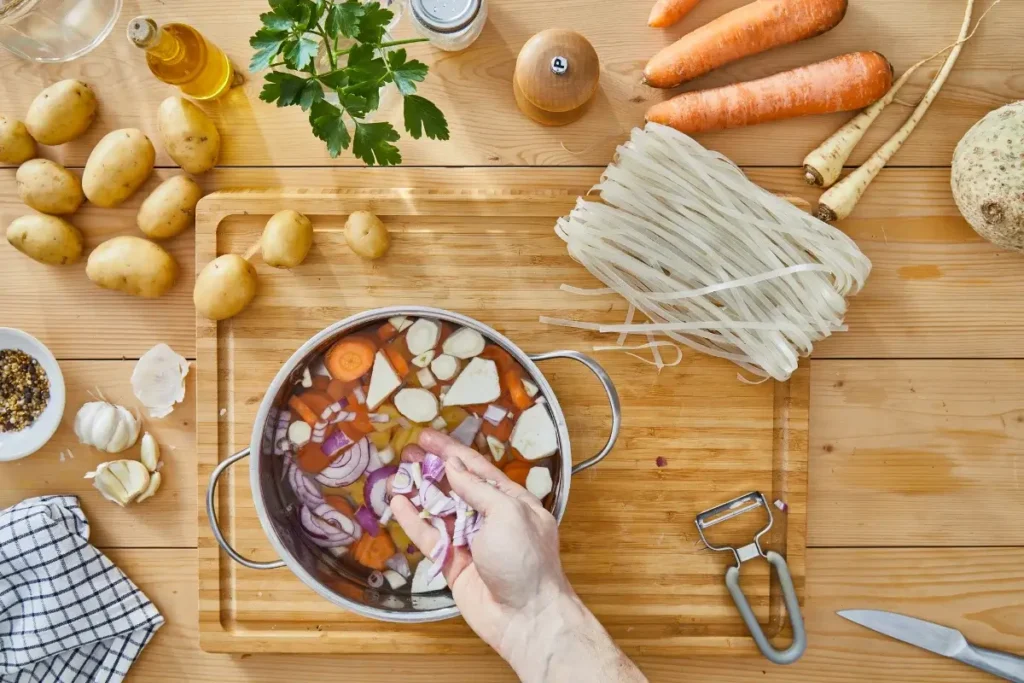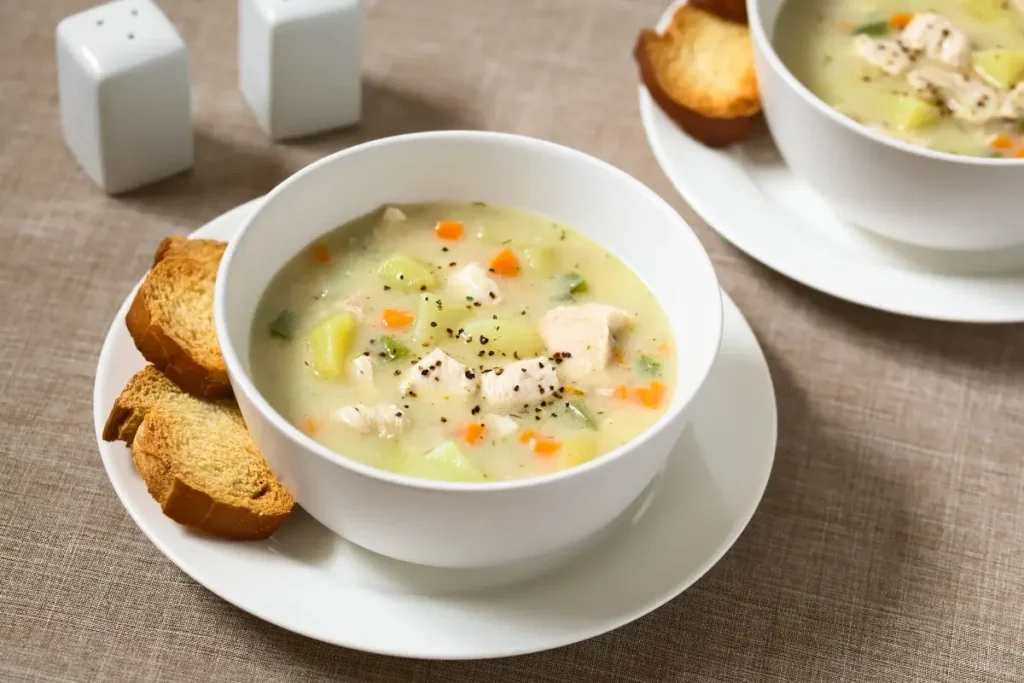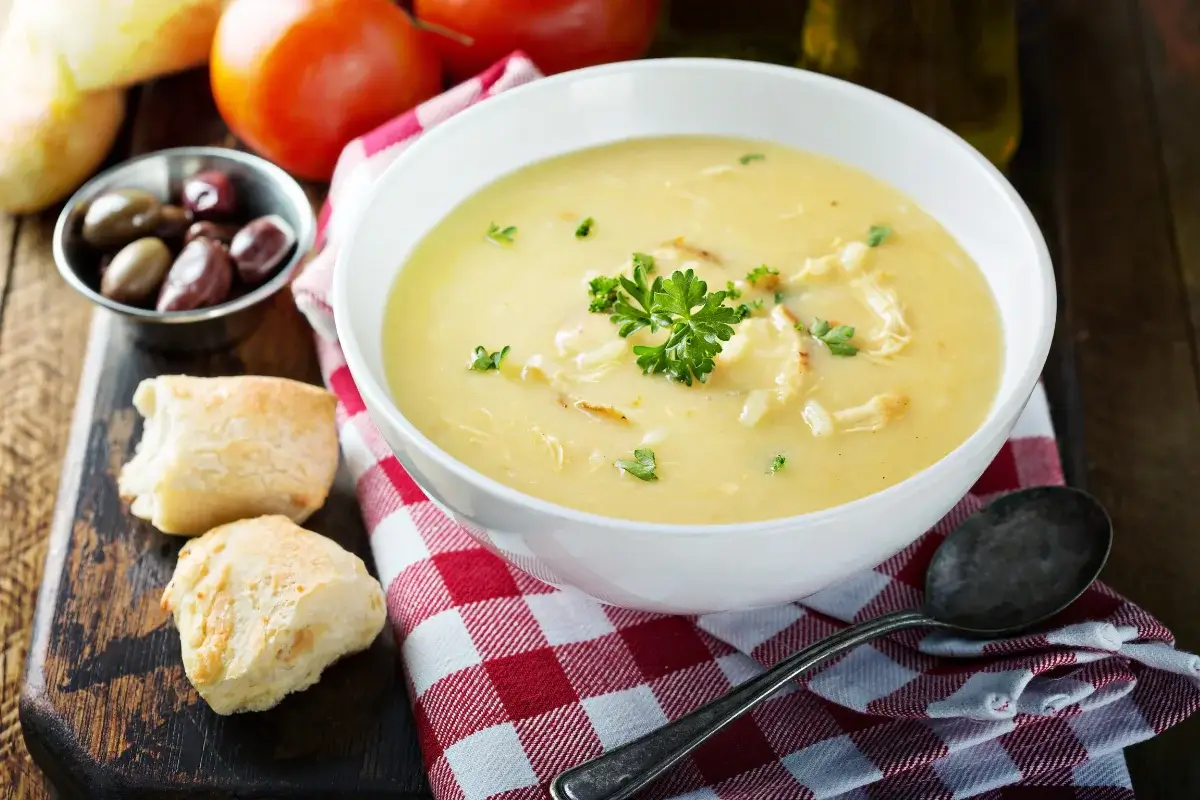Last Updated on March 7, 2025 by Simon
Few dishes evoke comfort and nostalgia like a bowl of soup. Whether it’s the hearty warmth of a chicken noodle, the creamy richness of a bisque, or the simple clarity of a broth, soup is a universal symbol of nourishment. But for all its simplicity, crafting a truly exceptional soup often leaves cooks wondering: what is the secret of good soup?
The answer isn’t as simple as one magical ingredient. Instead, it’s a combination of thoughtful techniques, quality ingredients, and an understanding of how flavors work together. Good soup doesn’t just happen, it’s the result of intentional steps that elevate it from ordinary to extraordinary.
In this article, we’ll uncover the elements that make great soup: the science behind layering flavors, the art of balancing textures, and the small adjustments that turn a basic recipe into a masterpiece. Whether you’re a seasoned chef or just starting your culinary journey, you’ll find these insights invaluable.
Let’s dive into the secrets behind every great bowl of soup.
Table of contents
Why Understanding the Secret of Good Soup Matters
Soup may appear simple, but its charm lies in the complexity of flavors and textures that make it so versatile. A well-made soup can be a light appetizer, a hearty meal, or even a soothing remedy for a cold. But achieving this balance requires an understanding of several key principles.
1. It’s All About the Base
The foundation of any good soup is its base. A rich, flavorful stock, whether chicken, beef, vegetable, or seafood, sets the stage for the entire dish.
- Why It Matters: Stock adds depth and umami, making even the simplest soups taste luxurious.
- Pro Tip: Homemade stock is always superior. If using store-bought, opt for low-sodium varieties to control seasoning.
2. Aromatics Build Layers of Flavor
Aromatics like onions, garlic, celery, and carrots aren’t just fillers; they’re flavor powerhouses. Sautéing them at the start of the cooking process unlocks their potential.
- Why It Matters: This step creates a base layer of flavor that infuses every spoonful.
- Pro Tip: Deglaze your pot with wine, sherry, or a splash of vinegar to capture those caramelized bits.
3. Balancing Seasoning is Key
Seasoning isn’t just about salt, it’s about balance and it’s an other important secret of a good soup. Acidity, sweetness, and spices all play a role.
- Why It Matters: Over-seasoning can overwhelm, while under-seasoning leaves soup bland.
- Pro Tip: Taste as you go and adjust gradually. A squeeze of lemon at the end can work wonders to brighten flavors.
4. Texture Brings Interest
Texture transforms soup from one-dimensional to dynamic. Silky purees, hearty stews, or a mix of smooth and chunky elements can all create an engaging eating experience.
- Why It Matters: Contrast keeps the palate interested.
- Pro Tip: Pair smooth soups with crunchy toppings like croutons or nuts for contrast.
5. The Power of Low and Slow Cooking
Good soup takes time. Allowing it to simmer gently melds flavors and extracts maximum depth.
- Why It Matters: Rushing the process can result in uneven or underdeveloped flavors.
- Pro Tip: If time is short, consider using a pressure cooker for rich results in less time.
6. Garnishes: Not Just for Looks
Garnishes like fresh herbs, grated cheese, or a drizzle of oil aren’t just decorative, they’re flavor enhancers.
- Why It Matters: They add complexity and visual appeal.
- Pro Tip: Use garnishes that complement your soup’s primary ingredients. For example, basil is perfect for tomato soup.
7. Customizing for Preferences
A good soup adapts to its audience. Whether you’re catering to dietary restrictions or personal preferences, flexibility is key.
- Why It Matters: Customization makes soup accessible and enjoyable for everyone.
- Pro Tip: Swap ingredients like cream for coconut milk or use gluten-free noodles to accommodate specific needs.
If you’re looking for inspiration to put these soup-making secrets into practice, why not try a recipe that’s both unique and flavorful? Check out our detailed guide to making Swamp Soup. This hearty and nutrient-packed dish showcases how the right combination of ingredients and techniques can create a truly memorable bowl of soup. It’s an excellent example of the principles we’ve discussed, layering flavors, balancing textures, and achieving perfect seasoning.
The Secret in Action: How to Apply These Principles

Now that we know what is the secret of good soup, it’s time to act. Great soup comes from mastering techniques and making smart choices. Here’s how to apply these secrets for delicious results.
- Start with Quality Ingredients
Always opt for fresh produce and quality proteins. What is the secret of good soup? It starts with ingredients that shine and enhance the flavor. - Master the Art of Sautéing
Sauté aromatics like onions and garlic slowly to release their sweetness and build a flavorful soup base.- Tip: Watch for the golden-brown stage to maximize the depth of flavor. What is the secret? It’s the small steps like this that make a big difference.
- Use Stock Wisely
Avoid diluting your soup by overusing water. Stick to flavorful stocks that align with the type of soup you’re making.- What is the secre? A well-seasoned, rich stock can elevate even the simplest ingredients.
- Season in Layers
Seasoning your soup isn’t a one-and-done task. Add salt, spices, and acids at different stages to build complexity.- Pro Tip: Taste as you go and experiment, what is the secret? Balanced seasoning.
- Experiment with Textures
Use tools like blenders or strainers to perfect your soup’s texture, chunky, creamy, or a mix. The right texture is key.- What is the secret? A combination of matching textures that keeps each bite exciting.
- Finish with a Flourish
Never skip garnishes fresh herbs, cheese, or flavored oil can elevate your soup to a gourmet delight.- What is the secret? It’s those final touches that elevate presentation and taste.
By applying these principles, you’ll not only grasp what is the secret of good soup but also bring it to life in your kitchen. Each bowl will showcase the care and skill you’ve mastered.
Common Mistakes to Avoid When Making Soup
Even the simplest dishes, like soup, can go awry if you’re not mindful of key steps. Avoiding these common mistakes can make the difference between a lackluster bowl and a truly memorable one. What is the secret of good soup? It starts with knowing how to sidestep these errors.
One frequent misstep is overcooking the vegetables. While simmering adds flavor, cooking vegetables too long can turn them mushy and dull in color. To preserve their texture and vibrancy, add sturdier vegetables like carrots and potatoes first, and save delicate ones like spinach or peas for the final minutes of cooking.
Another pitfall is under-seasoning the soup. Many home cooks are hesitant to season their dishes adequately, fearing they’ll overdo it. But soup depends on a well-balanced combination of salt, spices, and acid. What is the secret of good soup? It’s about tasting as you go and seasoning in layers, starting with the stock and adjusting throughout the cooking process.
Skipping aromatics is another major mistake. Ingredients like onions, garlic, celery, and carrots are the backbone of a flavorful soup. Sautéing these aromatics before adding liquids helps to unlock their full potential. Without this step, your soup might lack depth and complexity, proving that skipping this secret can result in bland results.
Finally, avoid the temptation to rush the process. Soup is one dish that rewards patience. Letting it simmer gently gives flavors time to meld and develop. What is the secret of good soup? It’s the patience to let each ingredient shine without rushing the process.
By sidestepping these common mistakes, you’ll be well on your way to mastering the art of making exceptional soup every time.
How to Store and Reheat Soup Properly

Proper storage and reheating are absolutely essential for maintaining the quality and flavor of your soup. However, here’s the real question: What is the secret of good soup when it comes to leftovers? Ultimately, it’s all about preserving its essence while reheating with care.
When storing soup, first ensure it cools down quickly to avoid bacterial growth. Next, transfer it into shallow containers and refrigerate within two hours of cooking. For longer storage, you can freeze the soup in sealed containers or freezer bags. Additionally, be sure to label the containers with the date so you can easily keep track of how long it has been stored. Most soups can be frozen for up to three months, although cream-based or dairy-heavy soups may separate when reheated.
When it’s time to reheat, avoid the microwave for large portions because it often heats unevenly and can overcook certain ingredients. Instead, opt for a stovetop to maintain better control. Heat the soup gently over medium-low heat, stirring occasionally to distribute heat evenly. If the soup has thickened too much during storage, simply add a splash of water, broth, or milk to return it to the desired consistency.
So, what is the secret of good soup when reheating creamy varieties? Reheat them slowly and stir frequently to prevent curdling. If you need to use a microwave, reheat in short bursts, stirring between intervals to ensure even heating.
By storing and reheating soup correctly, you’ll not only preserve its texture and taste but also ensure that every bowl is just as satisfying as the day you made it.
Frequently Asked Questions (FAQs)
The stock or broth is the heart of any soup. A rich, flavorful base can transform simple ingredients into a culinary masterpiece.
Yes! You can create flavorful soups by building depth with aromatics, tomatoes, or roasted vegetables.
It’s likely under-seasoned. Adjust with salt, acid (like lemon juice), or spices to enhance flavor.
Blend cooked vegetables with cream, coconut milk, or cashews for a silky texture.
Yes, dilute with unsalted stock, add a starchy ingredient like potatoes, or balance with sweetness.
Soups often taste better the next day as flavors meld. Store in airtight containers and reheat gently.
Final Thoughts
So, what is the secret of good soup? It’s about building layers of flavor, balancing seasoning, and paying attention to texture. These elements, combined with quality ingredients and thoughtful techniques, can turn any soup into a masterpiece.
Remember, great soup isn’t just a recipe, it’s an experience. Whether you’re crafting a hearty stew for family dinner or a delicate broth for a special occasion, these secrets will guide you every step of the way.
Take what you’ve learned here and let your creativity simmer. And when you make your next pot of soup, savor the joy that comes from mastering the art of a truly good soup.

